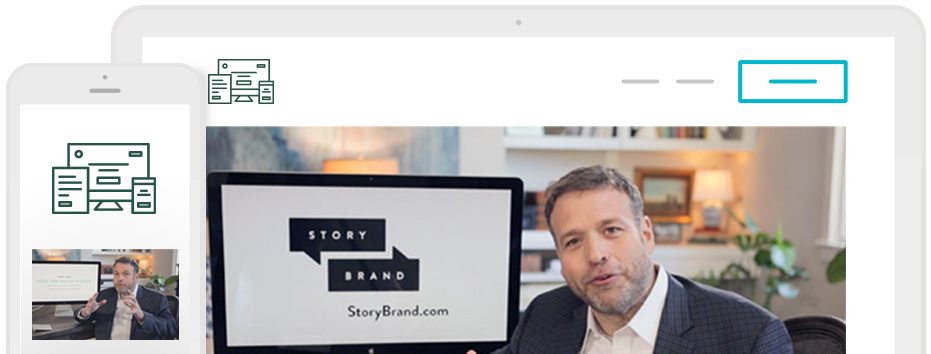
Episode Description
When we start talking about emotions in the workplace, a lot of us start squirming in our rolling chairs. Please, we think, let’s go back to page-by-page analysis of that TPS report.
In fact, you may already be giving me the stink eye in this blog post. Don’t worry, we’re not doing any trust falls.
But we need to acknowledge, the workplace is an emotional place  . I mean, you’re mixing people with performance and throwing money in there along the way. What could go wrong?!
. I mean, you’re mixing people with performance and throwing money in there along the way. What could go wrong?!
In this “minisode” of the Building a Story Brand podcast, I’m talking with Miles Adcox of Onsite, a therapeutic retreat center, to talk about emotional fitness in the workplace.
Miles has taught me a quick and practical strategy to use when emotions run high at work (or anywhere, really).
It’s going to help you plug into what’s really going on in your body and your mind when you’re stressed at work. It’s a powerful tool that’s saved me from screwing a lot of things up, and I know it’s going to help you, too.
It’s called an “emotional body scan,” and you just ask yourself three questions whenever you’re feeling emotional stress.
1. What am I feeling?
Don’t overthink it. Just give what you’re feeling the first name that comes to mind. Envy. Shame. Heartbreak. Anger.
2. Where am I feeling it?
Now we’re drilling down from what this emotion is to where you feel it in your body. This step may sound squishy as you’re reading it right now — but when those visceral moments come, it will make sense. For me, it feels like a lot of this stuff is in my chest. Sometimes it’s gut, head, hands, or face.
3. How big is it?
Finally, just give your emotion a number of a scale of 1-10. That’s it.
This exercise has saved my tail more times than I can count.
For example, I was about to give a talk at Harvard, and it hit me. I felt like I was out of my league, like I didn’t deserve to be there, like I wasn’t smart enough.
Emotional body scan to the rescue: Intimidation, Chest, 6.
It was that simple. Once I identified it, I walked up on stage and said, “You know, I’ve got to tell you, you guys are the most intimidating audience I’ve talked to in a long time, because you’re so stinking smart, but you invited me. Let’s keep going,” and everybody loved it because there was some honesty about what was really going on with me.
If I hadn’t, I probably would have spent the first 15 minutes jawing about why I deserved to be there and how smart I was — which of course would have made me look pretty stupid.
It’s a simple exercise, but here are four tips to help you make the most of it:
Tip #1: Use it when you’re “hooked.”
We all have what Miles calls “emotional hooks.” Something stresses us out and it makes a bigger impact than it deserves. That typically means it’s “hooked” to something else. It’s got historical context.
So, for example, your colleague just said something to you, and it brought up an old message that goes back 25 years to your dad. The emotional body scan is ideal for these moments.
Tip #2: Do away with words.
It’s tempting to explain your emotion away. But don’t create a 10-point PowerPoint presentation on why you’re feeling fear. That won’t help you right now. This is not about dragging up the past. It’s about getting grounded in the moment.
Tip #3: Practice.
The more you practice the emotional body scan, the more clear you’ll get about what you’re feeling, when you’re feeling it, and how big it is.
Tip #4: Focus on awareness, not change.
The point of an emotional body scan isn’t to change your behavior. It’s simply to know what the emotion is. That leads to insight and clarity about what’s really going on, which, as Miles points out, is truly powerful:
“The enemy of authentic emotion is confusion and noise. When we are in noise and confusion, we don’t have to truly feel what we’re feeling. But when we get clear and when we identify the feeling underneath the feeling, boom. It loses its energy.”
Funny, isn’t it? Just like in our marketing and messaging, confusion is the enemy.
There’s plenty more wisdom from Miles Adcox in the full mini-episode of the podcast, including more about how to take your initial feeling and dig deeper to what its root is. Give it a listen and then we can all go back to our TPS reports.

Could 5 Minutes Transform Your Marketing?
If your marketing is confusing, you’re losing customers. Get our three 5-minute videos to help you clarify your message and grow your business. They’re free!
Podcast produced by: Tim Schurrer
Additional editing by: Nick Jaworski








